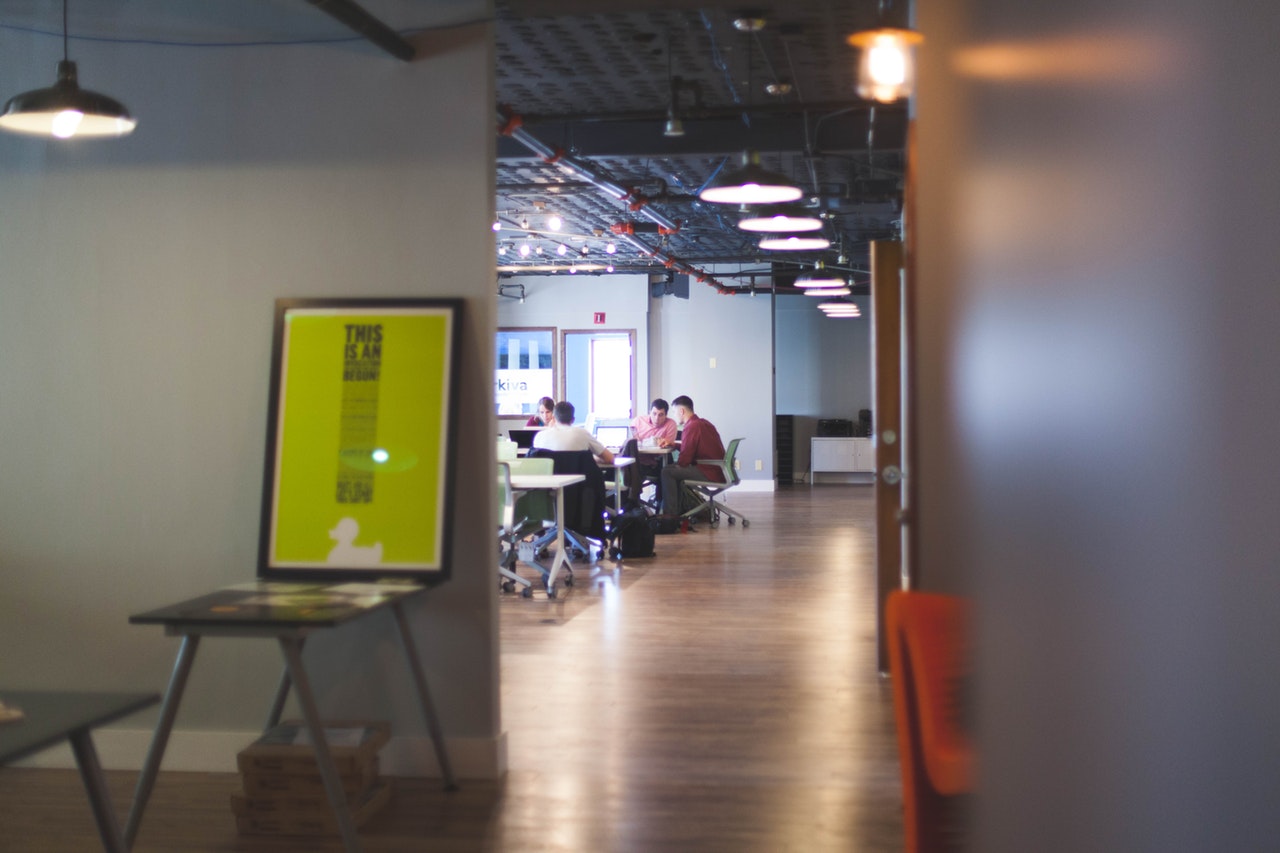How Office Design Has Changed Over the Years
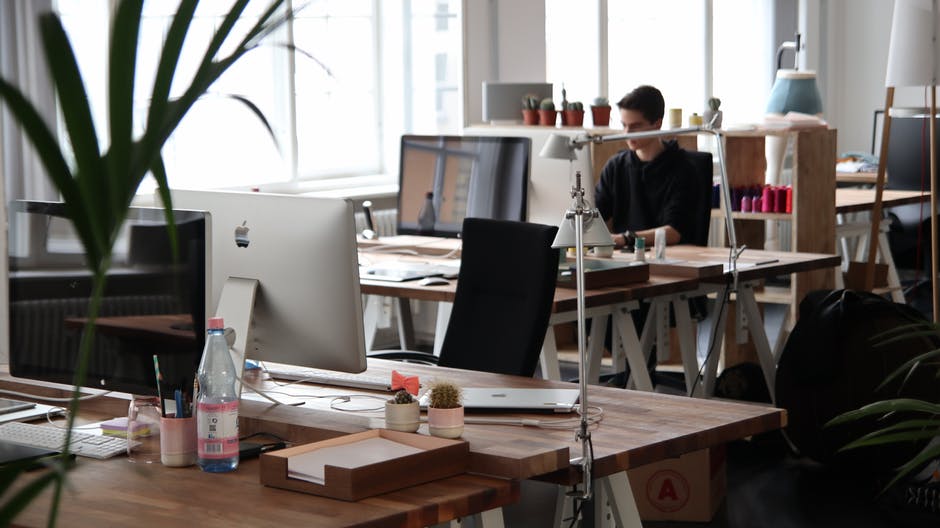
What are the major movements in office design that lead up to current design approaches to a typical Coworking Space here in Manila?
- The birth of the office and its manufacturing industry influence
- Establishment of midcentury aesthetic and introduction of the diverse thematic and cross continental schools of thought
- Booming of Late 20th century electronic advancements and shifts in corporate culture
- Current trends paralleling to science, technology, and cultural millennialism.
Throughout ancient history, offices have always existed in many invariable yet paradigmatic forms. Since the zenith peak of the Roman Empire, record storage and venues for organized bureaucratic affairs were planned and constructed with their own specified architectural attributes. However, it wasn’t until the 20th century that the world saw the birth of standard office design structures as an essential fixture in the increasingly interconnected global exchange procedures.
Managerial tasks take their shape within office parameters; optimized working conditions for productivity and efficiency in coordination to operative task distribution are top priority in making decisions towards workplace arrangements and interior design.
The entire span between 20th and 21st century saw many significant milestones in office design. Advancements in technology and professional business interplay dynamics dictated the tides of change. When in search for Manila Office Spaces for Rent, it would be a great advantage in work appropriation to have a knowledgeable grasp on how and why office spaces evolved throughout the century. In order to better understand the seismic shifts that took place, here’s a look back at the key periods that incrementally and substantially shaped office interior design:
EARLY PERIOD
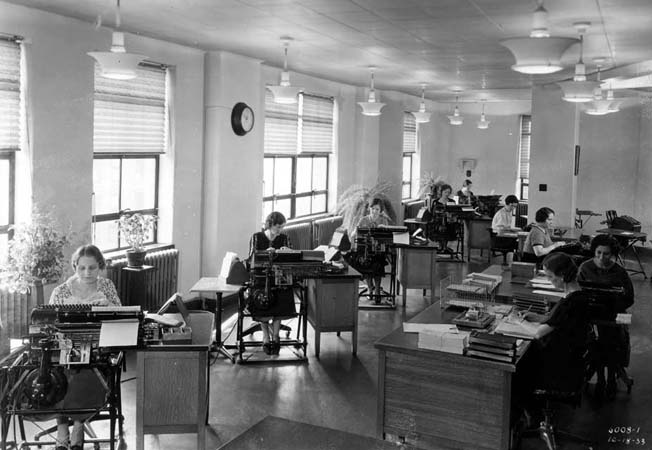
Beginning in the early 1900s and stretching out to the 1930s, pure office spaces began to take form. The origins of the office workplace stem from the developing causal demands of the militant manufacturing industry during this period. Staff numbers increase and space is beginning to be specifically designed in certain ways to fit maximal efficiency. The application of telephone systems for business purposes put more and more people behind office desks.
The movement of Taylorism (1904) essentially emulated the working elements of a factory. American engineer, Frederick Taylor developed the system to also critically have exclusive office rooms for bosses to overlook employees in their work stations.
Taylor’s invented structure became the business standard and extended to government firms. Following this, the European Modern Movement (1920s) incited European adaptation to American style, and also constructed the initial miniature skyscrapers specific for were beginning to emerge. Finally, the Streamlined Office (1930s) introduced and sparked a more encouraging and transitional approach towards office interaction.
MIDDLE PERIOD
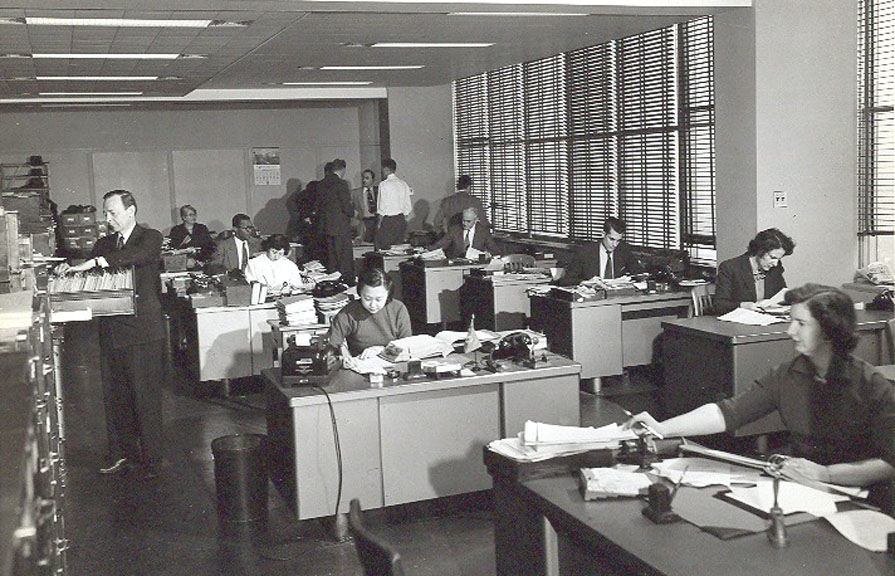
Moving with the 1950s, Midcentury Modern furniture units saw the dawn of collaboration. Stylistic arrangements sought for more natural grouping schemes of desks and office furniture that encourage combined efforts –organic partitions, with air conditioning and fluorescent lighting as finishing staples.
Corporate America (1950s) delineated Modern movements in architecture that highly depended on steel and glass, leading innovators in New York pioneered a completely controlled hold on even the most minute of details, such as room temperature. Elaborate lighting systems heralded natural light as an unnecessary element in office space.
In Germany, the Schnelle brothers’ Bürolandschaft (1960) ideology of the ‘office landscape’ beckoned large but structurally cohesive spaces that bases off an open plan layout that still strategically allocates appropriated areas, often times with the help of plants. Bürolandschaft takes influence on a more ‘nuanced’ continental understanding of human relations then that of Taylorism.
The Action I & II (1960s) schemata was aesthetically derived from the prominence of Andy Warhol and Roy Lichtenstein. Three light interlocking portable walls established stations that reinforced communication and saturated small co-working spaces, this would later on influence the notorious Cubicle Farms of the 1980s.
The European Structuralist Office (1960s-1970s) had more of an anthropologic take on human working grounds, the structure adapted that of a culturally organic “working village”; instilling a sense of community without displacement through its arrangement of an organizational grid.
Towards the end of the decade, the 1970s wave of Continental European Offices as well as British and American Offices saw dominant rejections of the Bürolandschaft approach, workers were yearning for smaller groups, secluded stations, and more private areas.
LATE TO CONTEMPORARY PERIOD
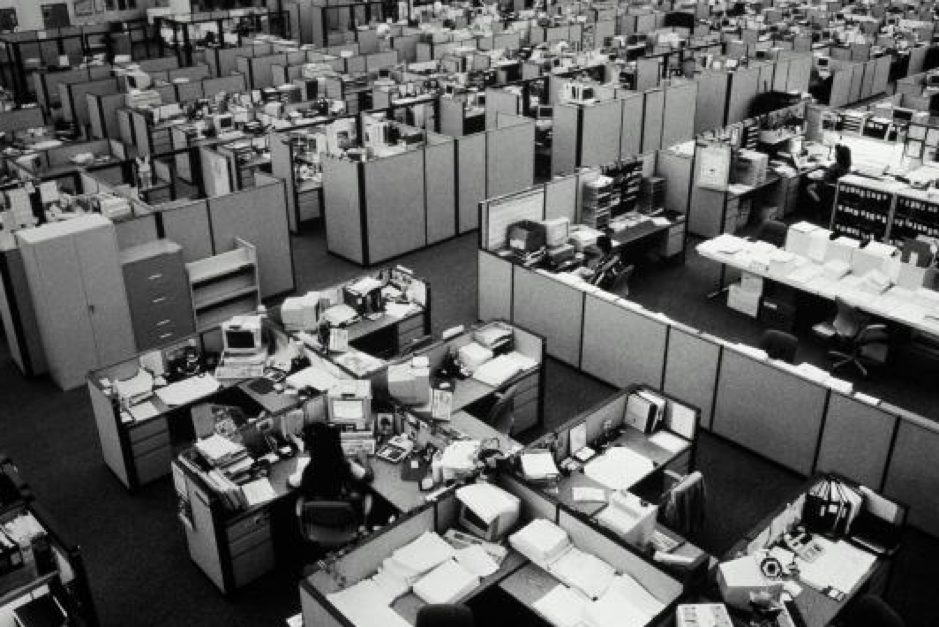
The 1980s took a gastronomic change in office design interplay. The widely known Cubicle Farm was born, more private spaces were the imposed infrastructures for focus and aided productivity. Simultaneously, the first desktop computers were being utilized and laser printers were in every office corner. Towards the 90s the World Wide Web was beginning to plant its roots.
From the 1990s, 2000s and today’s world, corporate culture, resurgence on more social and collaborative endeavors for success. The rapidly evolving technological facilities conjoined more hot-desking and emphasized more multi-purpose meeting spaces. Health and well-being are given more recognized importance in the vast land of Virtual Office spaces.
Current Trends and Future Speculations
When thinking about the future of office design, it’s almost the same as playing through science fiction thought experiments. The possibilities on how holograms and other almost cartoonish developments can fit into the office dynamic are become more and more not so far-out.
The New Open-Plan Office takes down all the literal walls of past approaches and embraces more blatant looseness. The Creative Office goes free for all in terms of including many leisure devices such as arcade games and various entertainment machines. The productive benefits of The Agile Office also attribute themselves from the worker’s freedom of having no designated space.
Casual offices are becoming the norm in office designing. When thinking of the contrasting schools of thought in office design, keep in mind that these approaches mainly vary in the context of ‘humanizing’ principles of design; whether their open, enclosed cubicles, or professional neighborhoods.
Key Takeaway
When it boils right down to a rooted perspective Manila Office Spaces for Rent all exude a distinct type of mood. It’s up to potential tenants whether or not the space would cater to their work demands. The structural pillars office design elicits the overall morale of the workers. So take note of this article the next time you find yourself in search of a Coworking Space around Manila.




